Earlier this month, on his weekly phone call to a WGAN morning radio show, Gov. Paul LePage predicted that the wholesale price of eggs in Maine will “skyrocket.” He’d heard estimates, he said, that the price of eggs would be jumping from 69 cents a dozen wholesale to $1.87.
While he did not give a source for those precise numbers, he attributed this impending leap to a referendum passed in Massachusetts that bans the sale of eggs from caged hens. Maine’s only big egg farm, owned by infamous egg mogul Jack DeCoster but operated by Pennsylvania-based Hillandale, uses cages for its approximately 2 million laying hens in Turner.
That kind of price leap is not likely to happen anytime soon, said Hillandale spokeswoman Melanie Wilt. For one thing, Hillandale, which sells its Turner-produced eggs throughout New England, including a “significant” number in Massachusetts, she said, will be able to sell its conventionally produced eggs in Massachusetts into 2020, when the ban takes effect.
“If you are talking about the governor, I think he was making more of a broad statement about the pressure to produce cage-free eggs,” she said. “And cage-free egg production is more expensive than conventional.” Labor costs are just one of the higher costs associated with cage-free facilities, she said. “The bottom line is eventually, it is passed on to the consumer.”
But the exchange got us wondering: Who or what sets the price of eggs?
Eggs are not part of the commodity market. In the supermarket, they’re usually next to the milk, but the pricing system for these two staples of the American diet – per capita we eat 261 eggs a year – are nothing alike. There’s no government minimum price for a dozen eggs, although the United States Department of Agriculture has purchased surplus eggs as a means of assisting farmers with too much supply and not enough demand.
“It’s really market-based,” said Jay Earnshaw, who has been buying and selling eggs for 30 years at Dutch Farms, a Chicago-based egg and dairy supplier that sells eggs nationally and internationally. “It’s a very competitive market.”
And right now, unless you’re buying them direct from a small farm where the chickens live as close to nirvana as a chicken can – a different pricing system – they’re incredibly cheap.
“Crazy cheap,” Earnshaw said. “Money-losing cheap.”
Dennis Bowden of Bowden’s Egg Farm in Waldoboro has been in the business for 46 years, so he’s lucky enough to have his mortgage paid off. That said, the low price of eggs – the lowest they’ve been in a decade and not that different from what they went for retail when he was a boy – is not doing him any favors. He still has to heat the barns enough for the hens to thrive in a Maine winter, and pay for feed he has to get from Quebec, seven tons delivered every other Thursday, hasn’t gotten any cheaper during this ebb in egg profitability.
“We’ve been running in the red now for the last three months,” Bowden said.
EGG NEWS
Unofficially, the big guns in commercial egg farming have a lot to do with pricing. Like Jack DeCoster, a Maine native who is currently appealing a conviction that is supposed to send him to prison for three months, but whose egg empire extends through many states.
“Jack has always been the low-ball pricer, and he kind of sets the standards,” Bowden said. “And all of the rest of us hope we can get a little bit more than that, based on quality.”
On an official level, the United States Department of Agriculture tracks the price of eggs every week, and estimates how those prices will vary based on factors that include the price of feed, what worldwide demand is (as a nation, we export a lot of eggs) and the supply at any given time. (Fun facts: Hens don’t lay as many eggs in the winter and eggs are typically cheapest in May because that’s when supplies ramp up. The USDA also tracks industry numbers, such as how many laying hens egg producers have (311 million nationally in December).
The USDA negotiates for imports and exports of eggs, most recently reaching an agreement with South Korea to buy American eggs. Since the outbreak of Avian flu in America in 2015 – which caused a big spike in prices – many countries banned American eggs, including South Korea. But now South Korea has the Avian flu and its big Lunar New Year holiday, which calls for eggs, is coming up. This agreement reopens that egg trade door, and it means something to an egg farmer in Waldoboro, even an egg farmer like Bowden who has just 3,000 laying hens.
“I just got the word,” Bowden said.
This matters to Bowden, 68, who grew up on the egg farm started by his father in 1947, even though he personally is not going to be shipping eggs to South Korea. He sells only in Maine. But the space made by those eggs that get shipped off to Asia will create an opening somewhere in the overflowing American egg market for him. His product fits that niche of customers who want Maine-laid eggs but aren’t able to afford pasture-raised eggs sold at farmers markets and are less than eager to buy Hillandale’s eggs from Turner (the facility was featured in a Humane Society undercover video of dead and maimed birds and crowded cages, released last summer in advance of the Massachusetts vote, although a later investigation by Maine’s Department of Agriculture, Forestry and Conservation found no evidence of inhumane treatment).
Bowden, who majored in agricultural and resource economics at the University of Maine, is up to date in part because he’s got an egg farmer friend in Pennsylvania who can afford to subscribe to the egg newsletters produced by what might be the most powerful voice in setting the price of eggs domestically, market research publisher Urner Barry, and that friend keeps Bowden apprised of what’s going on in the egg market. Thus he knows that in the coming weeks, South Korean purchases of American eggs will make it easier to unload some of the eggs he’s got stored in Waldoboro to his 180 “Mom and Pop” accounts around the Midcoast area.
Urner Barry was founded in 1858 by a New York City printer who saw an opportunity to gather all the prices being paid by merchants in that port city. It publishes market quotes and commentary on the egg market, as well as poultry and red meat daily, and is considered the expert on tracking inventory. Which has a lot to do with pricing. For instance, when the Avian flu arrived in America in 2015, supply went way down as producers were forced to slaughter entire flocks, sending prices as high as the ones Gov. LePage was predicting on WGAN, $1.88 a dozen, wholesale. The flu never reached Maine, but it did a number on big producing states like Iowa.
That should be good for business, right? At least if you’re an egg farmer who doesn’t have the flu on your property. It would, if it weren’t for the fact that American customers don’t respond well to big price increases. They’re used to the incredible edible bargain that is an egg. Retail consumers, the ones that shop at say, Hannaford, where a dozen Nature’s Place eggs, brown, cage free, might run you $2.99, are less likely to put the brakes on egg buying. In fact, Urner Barry reported a pretty decent market for holiday baking season.
But the food companies, the ones that make mayonnaise or use, say, dried egg powder in their products, are far less likely to go along with a sudden spike in pricing.
“It’s the food service companies that backed out,” Earnshaw said. And they haven’t all come back yet, even though the Avian flu crisis here has passed. “They started substituting other things as a binder.”
That’s the industry rationale for the fact that throughout 2016, the price per dozen averaged only about 91 cents nationwide, the lowest it had been in a decade. The same decade during which the national trend has begun to move toward a cage-free setting for hens, which opponents, like Gov. LePage, say will increase egg prices. California’s mandatory cage-free egg production was passed several years ago but only went into effect at the beginning of 2015.
PASTURE-FED PRICING
A wholesale price of $1.87 a dozen doesn’t sound all that shocking in the grand scheme of things. The highest price Dennis Bowden remembers ever getting wholesale was $3.29.
For what it is, a dozen chunks of nicely wrapped-by-nature protein, a dozen eggs could well seem like a bargain. But there is one other segment of the egg business to consider; the direct farm market eggs, the kind like Daniel Mays sells from his Frith Farm in Scarborough and that Josh Girard plans to start selling this spring in Lyman. These are pasture-raised hens, who don’t just have a little more leg room in a barn. They get outside during the day. And their eggs cost a lot more; Mays typically charges $6.50 a dozen and Girard is going to start his prices at $7. Who sets these prices?
It’s a what’s called a cost-plus system. The farmer runs his or her numbers, for feed, for heating the barn, replacing fences if the chickens roam pasture land during the day, for associated repairs of equipment. (Which can last a good long time if it was well made to start out with; during a tour of his barn Bowden kicks a watering trough in his barn that he says is 40 years old.) Then the idea is to factor in the cost of his or her labor; that’s the area that could be considered flexibile, although most farmers would probably like to pay themselves at least minimum wage.
In both Mays’ and Girard’s cases, the high cost can be directly attributed to the price of organic feed. Maine doesn’t have an organic feed mill – one closed a couple of years ago – so they have to have their feed delivered from Vermont. Girard brought a few dozen eggs to farmers markets last summer.
“And they were just snatched up,” Girard said. “The demand for eggs is really high.”
It doesn’t take too many trips to farmers markets to see that this is true; the eggs, even those that aren’t organic, are often gone by 11 a.m. Once you’ve had an egg with a bright yellow yolk, it’s hard to go back to supermarket eggs. So Girard is going to test out that $7 price point and see how he does. Worth noting; each of those eggs is still less than 60 cents at that rate.
CAGE-FREE CONVENIENCE
Bowden made the switch to cage free in 2014, when the caged facility his dad had built in the 1960s had reached the end of its usefulness.
“I went back to the way we did it when I was a kid,” he said.
But it wasn’t as easy as just opening the gates of the cages. He also drastically cut his flock, which had been over 33,000, to just 3,000, which put him just below the benchmark for being federally regulated. This way, his life is easier, although, he points out wryly as chickens peck at his boots, there is just as much labor involved in 3,000 cage-free hens as there was in 33,000 caged birds.
His is what constitutes a small commercial operation.
For the big producers of 50,000 or more, like Hillandale’s giant hen farm in Turner, which is permitted to hold up to 4 million hens (the company has cut back to about half as many hens recently), going cage free would take much longer to implement. Hillandale spokeswoman Melanie Wilt said rumors that the Turner farm, which employs 275 people, would be shutting down “are news to me” and “unsubstantiated” but couldn’t say whether plans exist to convert it down the line. Hillandale’s corporate policy is that new facilities or expansions will be built as cage free. Two new cage-free Hillandale farms are due to come online in Ohio and Connecticut as early as this March, she said, and the expectation is that the cage-free Connecticut facility would be able to fulfill Massachusetts’ needs in the future.
Certainly demand is out there from retailers. Delhaize America, which owns Hannaford, announced its commitment to buying (and selling) entirely cage-free eggs by 2025. But Wilt said demand remains for the conventional eggs produced in farms like the one in Turner as well.
Back to the price of eggs. Are consumers likely to see a jump in egg prices any time soon?
“That is not the trend that I am seeing right now,” Wilt said.
Even if South Korea buys a tremendous number of American eggs, the prices are likely to stay low, absent another Avian flu outbreak of the kind that did send prices skyrocketing in 2015. Which isn’t great for a small commercial egg farmer like Bowden. But for anyone who likes a three-egg omelette on a regular basis?
“I don’t think the consumer has got anything to gripe about,” Bowden said.
Mary Pols can be contacted at 791-6456 or at:
Twitter: MaryPols
Send questions/comments to the editors.


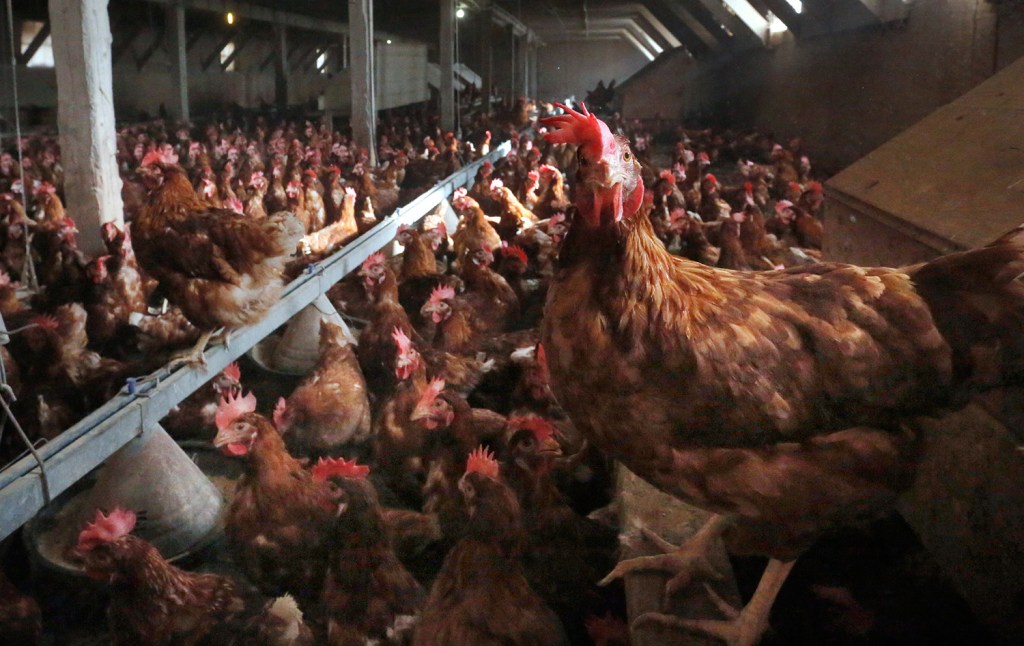
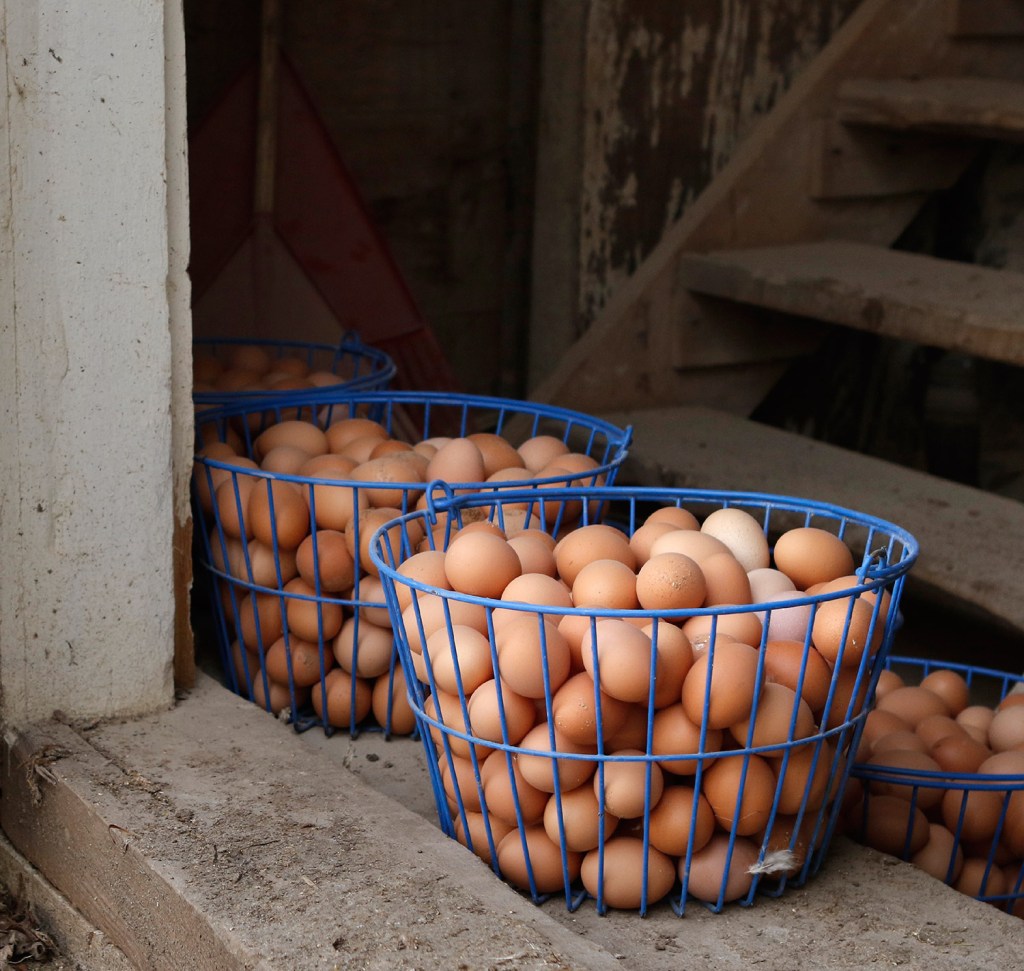

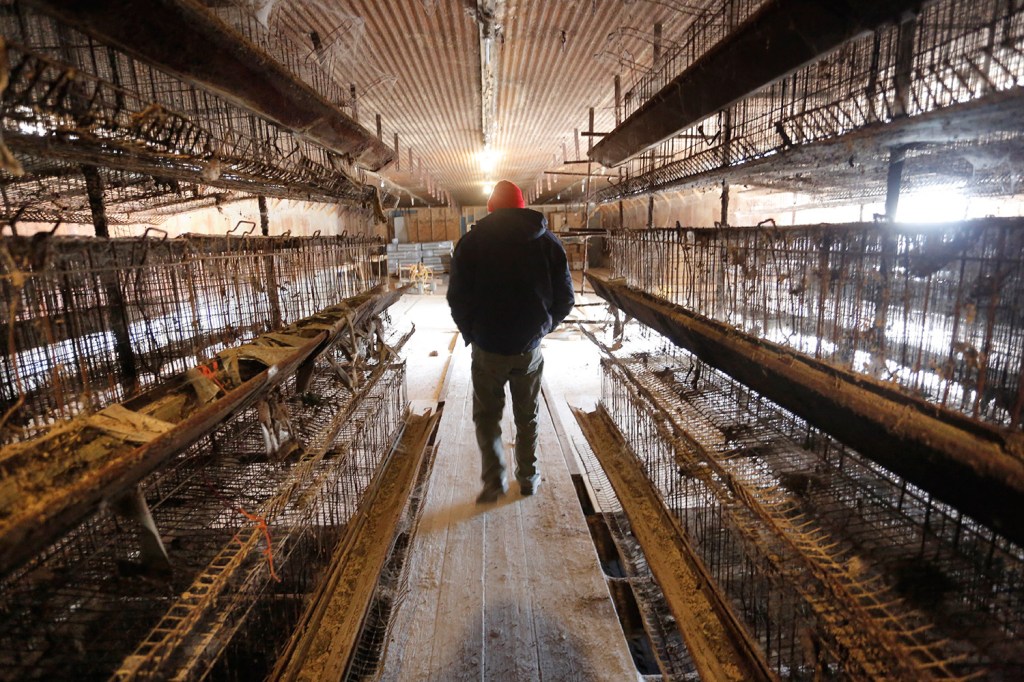
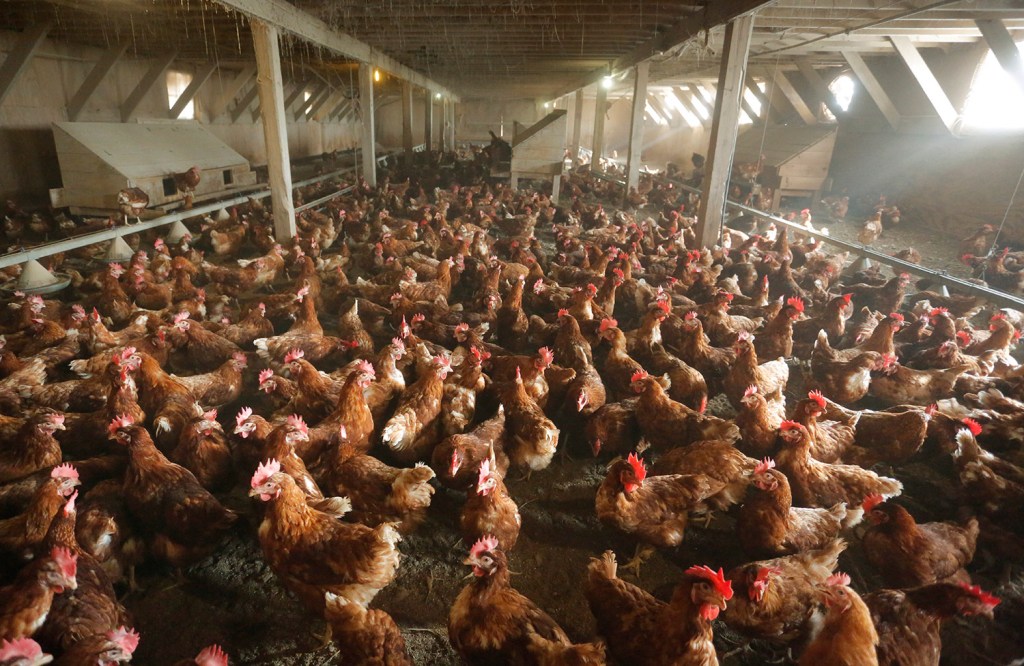
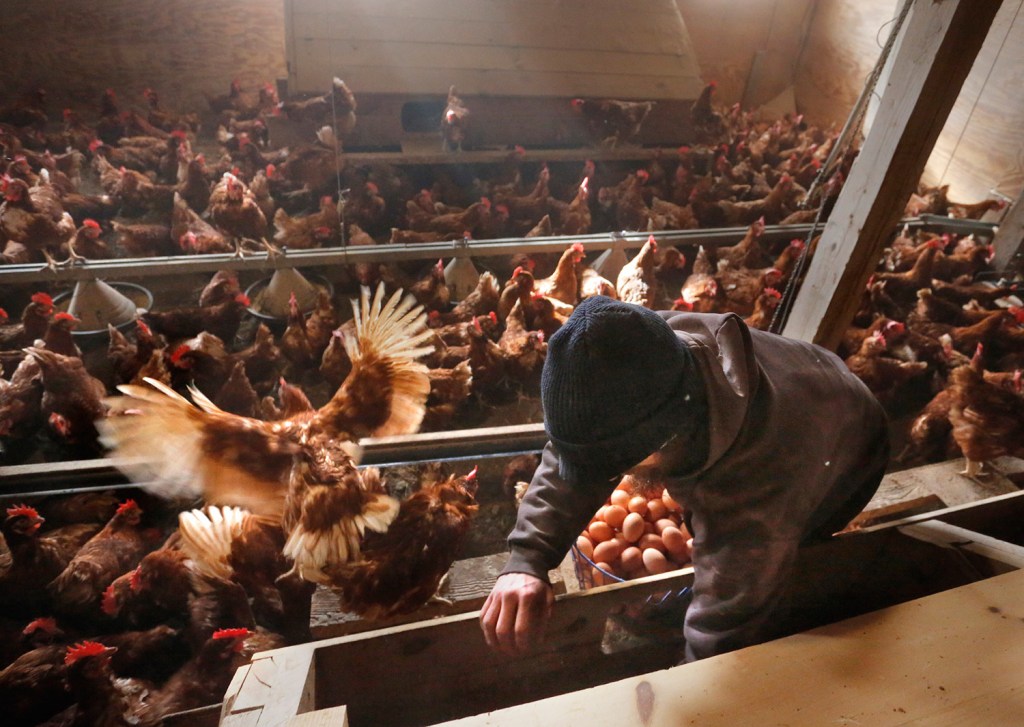

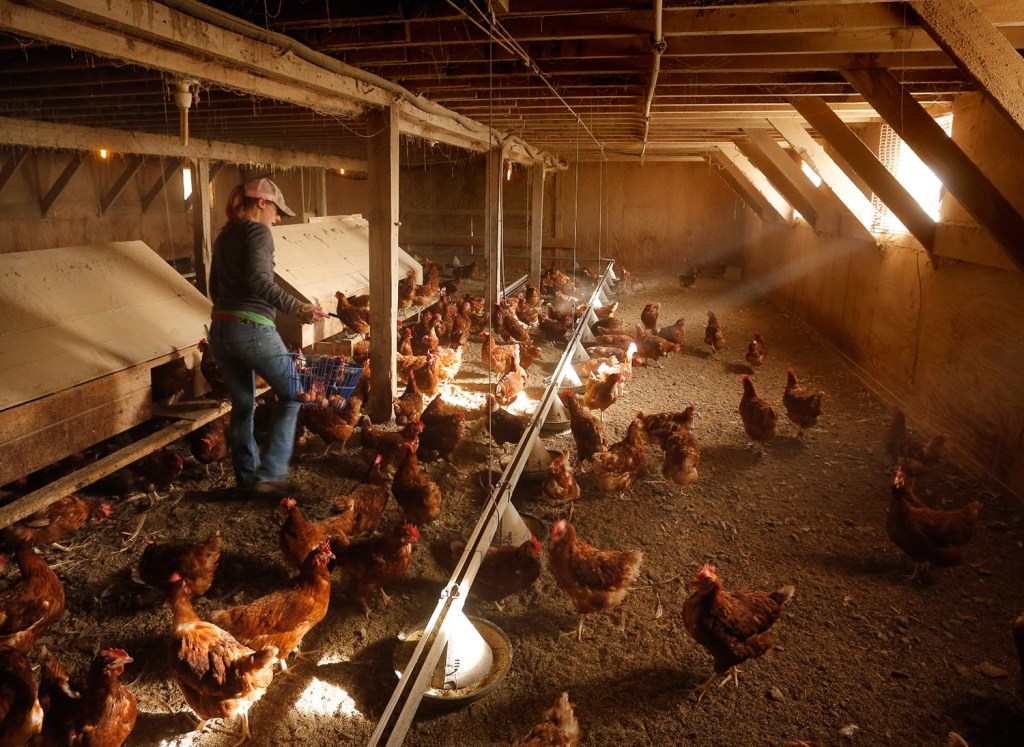

Comments are no longer available on this story